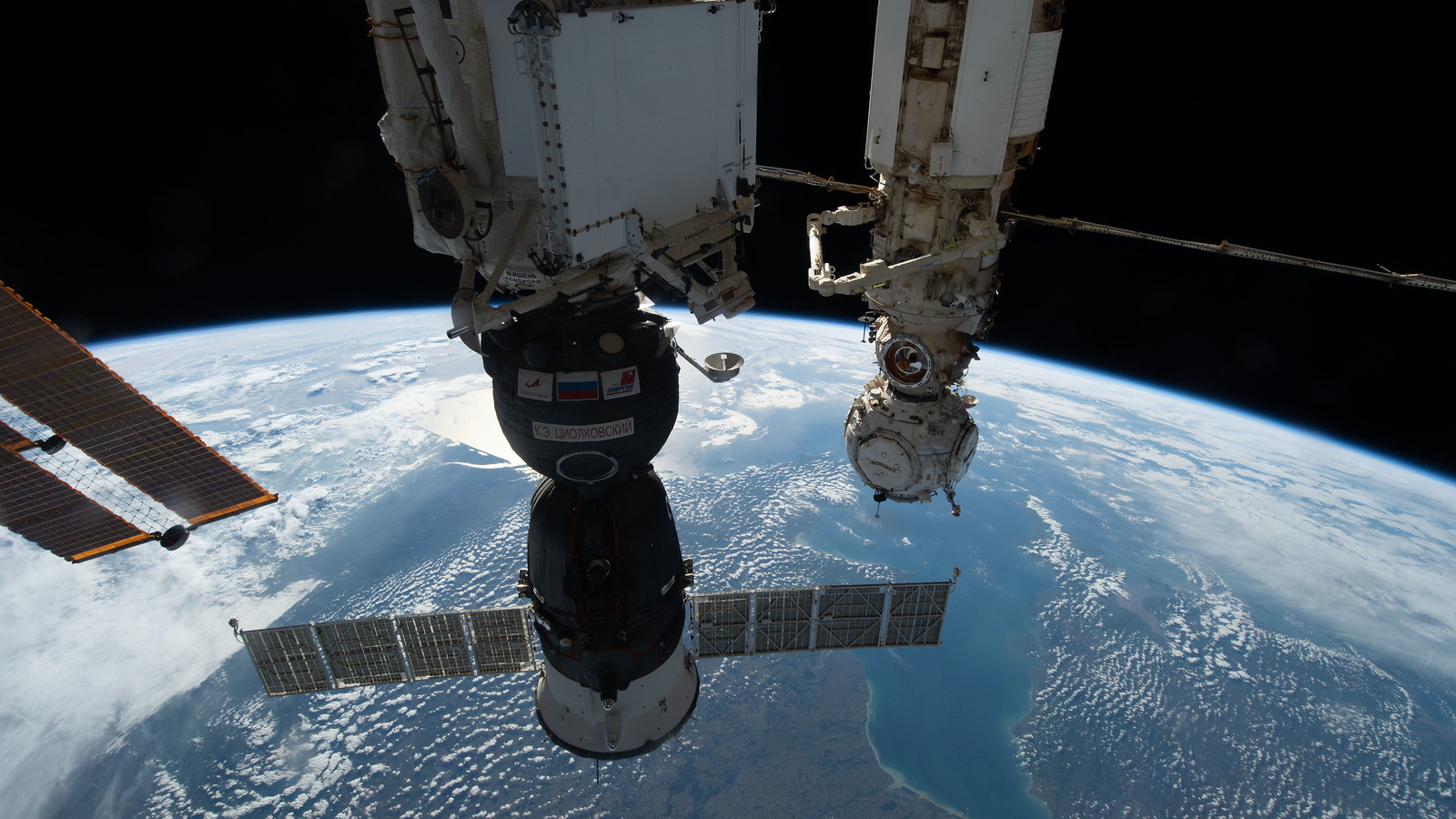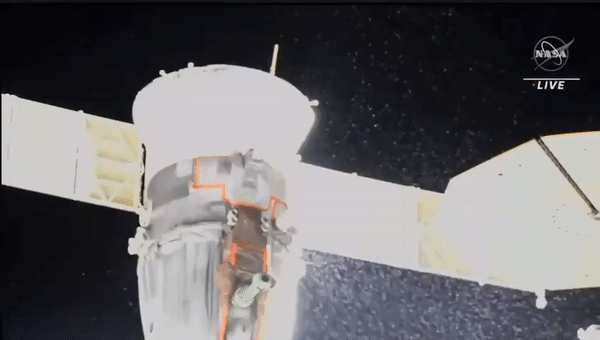
It's still unclear why a Russian Soyuz spacecraft at the International Space Station (ISS) sprang a leak last week, but one suspect has been ruled out: a strike by a Geminid meteor.
The Soyuz vehicle, known as MS-22, sprayed its coolant into space on Dec. 14, the same day that the annual Geminid meteor shower peaked. But there's no causal connection, NASA and Russian space officials said.
"We did look at the meteor showers that were occurring," Joel Montalbano, NASA's International Space Station program manager, said during a press briefing on Thursday (Dec. 22). "Both the trajectory team in Houston and the trajectory team in Moscow confirmed it was not from the meteor showers; it was in the wrong direction."
Related: Soyuz leak could strand 3 astronauts on space station, expert warns
NASA has been helping Russia's federal space agency Roscosmos with the leak investigation, and not just because both agencies are major ISS partners. This Soyuz brought NASA astronaut Frank Rubio and two cosmonauts to the orbiting lab in September and is scheduled to return the trio to Earth in March.
On Sunday (Dec. 18), NASA used cameras on the station's Canadarm2 robotic arm to inspect the suspected leak area. The survey revealed a small hole in the MS-22, which is the apparent source of the leak. But its origin remains a mystery, officials said.
"We got some work to do with imagery to better understand if it was a meteoroid hit or if there was a hardware issue, and that work is in front of us," Montalbano said.
Breaking space news, the latest updates on rocket launches, skywatching events and more!
The now-excluded Geminids are just one class of potential impactors. It's possible, for example, that a piece of space junk punched through the MS-22's hull. Any object capable of making such a tiny hole — it's roughly 0.8 millimeters wide — is too small to be tracked from the ground, said Montalbano and Sergei Krikalev, executive director of human spaceflight programs at Roscosmos, who was also on Thursday's call.

Part of the ongoing investigation is an assessment of the MS-22's flightworthiness. Roscosmos still needs to finish thermal analyses to determine how hot it will get inside the Soyuz during its Earth return, to see if it can safely carry the three spaceflyers home.
It's unclear when such work will be done, though Russian space officials have previously indicated that a decision could come by the end of the month.
If Roscosmos concludes that putting astronauts on the MS-22 is too big a risk, the agency will aim to fast-track the launch of the next Soyuz. That vehicle had been scheduled to lift off in mid-March from the Russia-run Baikonur Cosmodrome in Kazakhstan with three people aboard. Fast-tracking would involve launching it uncrewed a few weeks earlier, perhaps in late February, Montalbano said.
In that scenario, the MS-22 would still come back to Earth, but with no passengers.
"If it's decided that it's an uncrewed Soyuz, Roscosmos would plan to return the current Soyuz on orbit and collect the data so they can use that for future evaluations," Montalbano said.
Mike Wall is the author of "Out There" (Grand Central Publishing, 2018; illustrated by Karl Tate), a book about the search for alien life. Follow him on Twitter @michaeldwall. Follow us on Twitter @Spacedotcom or on Facebook.
Join our Space Forums to keep talking space on the latest missions, night sky and more! And if you have a news tip, correction or comment, let us know at: community@space.com.

Michael Wall is a Senior Space Writer with Space.com and joined the team in 2010. He primarily covers exoplanets, spaceflight and military space, but has been known to dabble in the space art beat. His book about the search for alien life, "Out There," was published on Nov. 13, 2018. Before becoming a science writer, Michael worked as a herpetologist and wildlife biologist. He has a Ph.D. in evolutionary biology from the University of Sydney, Australia, a bachelor's degree from the University of Arizona, and a graduate certificate in science writing from the University of California, Santa Cruz. To find out what his latest project is, you can follow Michael on Twitter.
-
Pogo More likely a nut, bolt, or other space junk too small to be detected by ground radar. There are likely innumerable pieces of such out there.Reply
